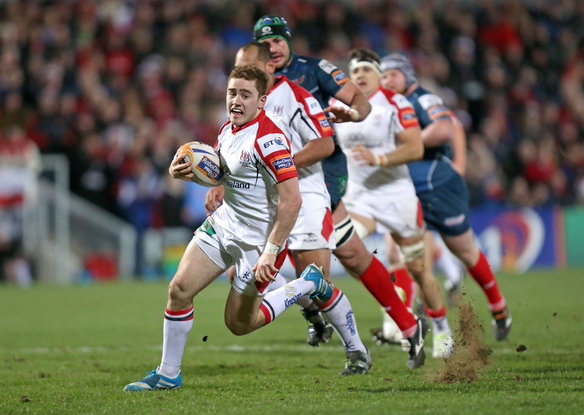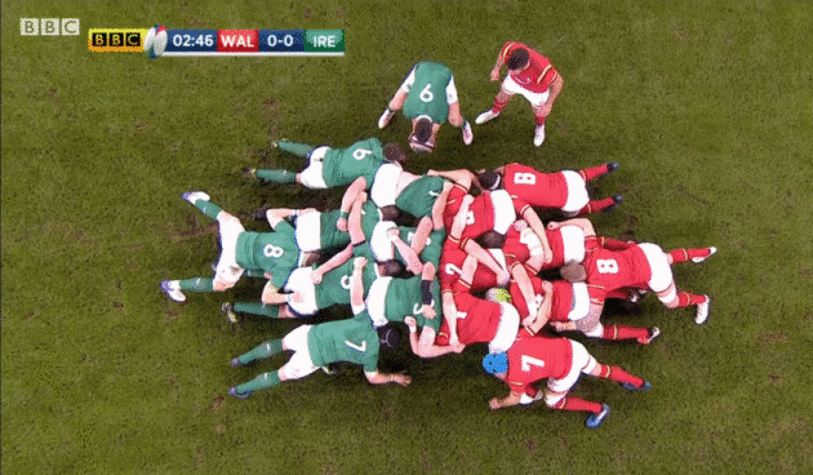Rugby is a global sport with players and fans from all over, therefore it only makes sense that there will be a variety of terms in rugby slang spoken during matches. Watching rugby and paying attention to the commentators, who will explain what is happening and why, is one of the best things you can do if you’re new to the sport and learning about it.
However, as was previously mentioned, these commentators say terms in rugby could be English, Australians, South Africans, New Zealanders, or from anyplace else, and they’ll probably be using words you’ve never heard before. We‘ve produced a list of terms in rugby that you may not be as acquainted with to assist clarify some of these rugby lingo.
Some terms in rugby you should know
Forwards
In a rugby team’s starting 15, there are eight forwards, who are often the bigger and heavier players. The front row of the scrum is made up of a hooker sandwiched between two props, the second row is made up of the two locks, and the third row is made up of flankers and the number eight.
Backs
The team’s fastest players are typically the backs or three-quarters, who wear the numbers 9 to 15. The backs’ main responsibility is to figure out how to use the ball won by the forwards in order to score tries, while the forwards set up the base of assaults by obtaining possession.
“On the Trot/On the Bounce”
Sometimes when referring to a team, you’ll hear people say things like, “They’ve lost four straight,” or “That’s three wins in a row.” These are merely other ways to phrase “in a row.” For instance, the Blues have “won six on the trot/bounce” at the present after winning six straight games.
“Dummy Runner”
Despite not receiving the ball, a player who runs an attacking line expecting a pass is known as a dummy runner. Because their sole purpose is to deceive the defender into believing they are receiving the pass, they are known as “dummy runners.”
Scrum
When the ball has been knocked on, moved forward, there has been an unintentional offside, or when the ball is locked in a ruck or a maul, the action is restarted with a scrum. Each team’s forwards will then form three rows and push against one another to regain possession of the ball. The hooker uses his foot to gain control of the ball as the attacking team’s scrum-half feeds it into the scrum. Scrums must form at the site of infractions and cannot be closer than five meters from the touchline or goal line.
Lineout
When the ball leaves the field of play, a line out results. After determining the “jumper,” or player who will be raised into the air in order to receive the ball, the hooker of the attacking side will proceed to throw the ball straight through the centre of the line out. A line out must consist of a minimum of two players from each team, and all participants must stand between the 5 and 15 meter lines. The number of players in the lineout is decided by the attacking side.
“Hoof It Downfield”
To “Hoof it downfield” or to “Give it a hoof,” as used by a coach, a commentator, or a teammate, is slang for punting the ball. A punt that covers a lot of ground is typically considered to be a good hoof.
The “Garry Owen”
The Garry Owen is a play in which a player kicks the ball high into the air, sprints beneath it, and competes for it in the air. It is named after the Garryowen Rugby Football Club in Limerick, Ireland. The Garryowen RFC, who also utilised the “up and under” move to great effect in the 1920s, is still remembered as the originator of the move.
“Five-Eighth/Fly-Half/First-Receiver”
The player who has the jersey number 10 goes by many different names. While most other nations refer to this player as the “fly-half,” New Zealanders and Australians frequently refer to him as the “first five-eighth.” The name “first-receiver” alone is another informal designation for this player. It’s interesting to note that in New Zealand, the #12 player is referred to as the “second five-eighth,” but in the rest of the globe, he is called the inside center.
Ruck

Similar in concept to the maul, the ball in the ruck is on the ground rather than being held aloft by players.
Advantage
The advantage rule is the window of opportunity following an infraction when the referee permits play to continue and gives the non-offending side a chance to achieve a tactical or territorial advantage. If the referee determines that this has been accomplished, he will signal “advantage over,” and play will continue. If no advantage materializes, the referee stops the game and calls the initial foul.
“Pilfer/Poach/Jackal”
Any time a player is tackled and a member of the other side reaches down to take the ball from the player being tackled, it is known as a pilfer, poach, or jackal. We tend to refer to this as a “poach” in the United States, a “pilfer” in the United Kingdom, and a “jackal” in the Southern Hemisphere.

Blood replacement
When a player receives a cut and is heavily bleeding, it is known as a blood bin or replacement. A replacement is now permitted while the wounded player receives care for his cut and is permitted to return to the field if he or she does so within 15 minutes. The temporary replacement becomes the regular player after this period of time has passed, and the injured player is not permitted to return.
Maul
When at least three players from each team are standing up in close proximity to the player holding the ball and challenging or driving him or her, a maul is formed. When perfected, the rolling maul, which is all about strength and force, is a powerful offensive tool that may be used to score tries or win penalties.
Conclusion
Rugby’s many positions, infringements, and formations may seem bewildering to individuals who have never played the sport before. We explained some of the most frequent terminology and terms in rugby used in rugby union in the article above.
Please read: http://rugbyqa.com/where-is-rugby-popular-top-10-rugby-countries/


